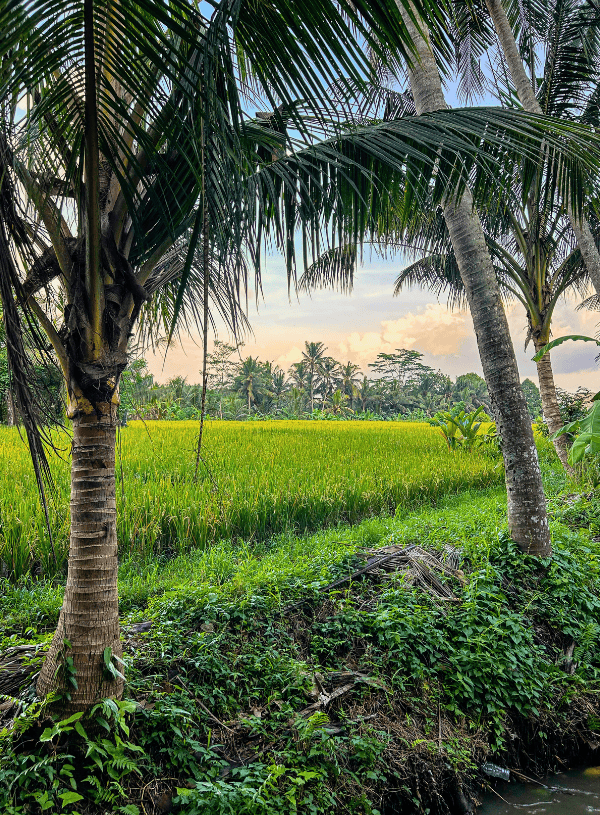Last Updated on May 9, 2025
Your trip wouldn’t be complete without a hike on one of the most suggestive mountains in China.
These places often offer the perfect chance to escape the noise and hustle of big cities. They offer fantastic views of untouched nature in the more remote areas.
First time in China? Check out this tips-packed Travel Guide for first-timers.

Planning Your Trip
Before starting, here are a few tips to consider if you plan to climb one of these suggestive mountains in China:
- Best Period to Visit: Remember that almost all these mountains are best visited in Spring (April and May) and Autumn (September and October).
- Plan Ahead: Research the mountain you plan to visit, including transportation options and specific attractions. Some mountains require significant travel time, so plan your itinerary accordingly.
- Peak Season Crowds: Popular mountains can be very crowded, especially during Chinese holidays (like Golden Week at the beginning of October). If possible, visit during off-peak times to enjoy a more peaceful experience.
- Guides and Tours: Hiring a local guide can enrich your experience, especially in culturally significant areas. They can provide deeper insights into the history and significance of the sites you visit.
My Bucket List For The Next Trip
1. Mount Huang (黄山, Huáng shān)
📍 Anhui Province
Mount Huang, also known as Yellow Mountain, is a breathtaking natural wonder south of Anhui Province.
Famous for its stunning granite peaks, the mountain offers some of the most picturesque views in China.

One of the highlights is Lotus Peak, the highest point on Yellow Mountain. From here, visitors can enjoy panoramic views of the surrounding landscape.
2. Zhangjiajie (张家界, Zhāngjiājiè)
📍 Hunan Province
If I had to pick one thing to visit during my next trip to China, it would be Zhangjiajie.
Zhangjiajie is known for its towering sandstone pillars, famously called the Avatar Mountains, because they inspired the floating mountains in the movie Avatar.

The area is part of the Zhangjiajie National Forest Park, a UNESCO World Heritage site where visitors can explore these unique rock formations, deep ravines, and lush forests.
Another highlight is Tianmen Mountain, known for its dramatic Tianmen Cave (“Heaven’s Gate”) and the thrilling Glass Skywalk, which offers heart-pounding views of the cliffs below.
3. Mount Fanjing (梵净山, Fànjìngshān)
📍 Guizhou Province
The runner on my bucket list for my next trip is Mount Fanjing. I’ve dreamed about visiting this place since my first time in China.
Mount Fanjing is a UNESCO World Heritage Site and one of China’s most sacred Buddhist mountains.

It is renowned for its unique rock formations, lush forests, and biodiversity.
The mountain’s most iconic feature is the Red Cloud Golden Summit, where two ancient temples, the Temple of the Buddha and the Maitreya Temple, sit precariously atop a narrow peak.
The mountain is also famous for its rich wildlife, including the rare Guizhou golden monkey.
4. Everest North Base Camp
📍 Tibet
Everest Base Camp, located on the Tibetan Plateau in the Tibet Autonomous Region, is the starting point for climbers aiming to reach the summit of Mount Everest, the world’s highest peak.
The camp, at about 5,150 meters (16,900 feet), offers breathtaking views of Everest’s towering north face and the surrounding Himalayan landscape.

Visitors can experience the Tibetan people’s unique culture while exploring the plateau’s vast, rugged terrain.
Whether you’re a trekker or simply seeking adventure, Everest Base Camp provides a once-in-a-lifetime opportunity to get close to the iconic Mount Everest and immerse yourself in the stunning beauty of the Himalayas.
The Five Sacred Mountains
And when it comes to mountains in China, you can’t miss the Five Sacred Mountains.
These mountains are significant not only for Taoist and Buddhist religions but also for Imperial China.
Emperors used to organize pilgrimages to these places, where they performed religious rituals and sacrifices.
Of course, the purpose of these places has changed. However, many Taoist and Buddhist temples, caves, and pilgrims remain, and they retain the same charm. These sites give tourists a glimpse into ancient China.
1. Mount Tai (泰山; Tài Shān)
📍 Shandong Province, Eastern China
Mount Tai is one of China’s most famous mountains and one of the most climbed mountains on the hearth.
One of the most beautiful spots is the South Heaven Gate, where you can enjoy breathtaking views after climbing the famous 6,000+ steps.
The Temple of the Jade Emperor is another must-see at the summit.

Don’t miss the Dai Temple at the mountain’s base, where ancient emperors would start their pilgrimage.
Each spot on Mount Tai gives you a unique look into China’s rich culture and history. The site offers cable car and shuttle bus options if you’re not in the best shape.
2. Mount Song (嵩山; Sōng shān)
📍 Henan Province, Central China
Mount Song is known for its rich history and beautiful scenery.
The North Peak is a popular spot. It offers fantastic views of the surrounding landscape, and it’s a great place to hike and enjoy the fresh air.

The mountain is also home to the famous Shaolin Temple, where kung fu originated.
3. Mount Hua (华山; Huà Shān)
📍 Shaanxi Province, Western China
Mount Hua is known for its dramatic landscapes and is the best place for thrilling hikes.
The East Peak is famous for its stunning sunrise views, especially when you’re above the “Sea of Clouds.”

The highest point, South Peak, offers unforgettable panoramic views and the Plank Walk, one of the most thrilling hikes.
This narrow wooden walkway is attached to the side of a sheer cliff, with nothing but a safety harness and a few chains between you and the drop below.
The adrenaline rush and the incredible views of the surrounding mountains make it a must-try for adventure seekers.
If you plan on adding Xi’an to your China trip, make sure to check this travel itinerary.
4. Mount Heng (衡山; Héng Shān)
📍 Hunan Province, Southern China
Mount Heng is celebrated for its beautiful mountain ranges and serene natural landscape.
The mountain is covered with lush forests and ancient temples, offering a peaceful escape into nature.
Key spots include the highest point, Zhurong Peak, where you can enjoy panoramic views of the surrounding ranges.
The Nanyue Temple, one of the largest and most important temples, is a spiritual highlight, attracting pilgrims from all over the country.
5.Mount Heng (恒山, Héng Shān)
📍Shanxi Province, Northern China
Heng Shan is famous for its rugged beauty and cultural significance. The mountain offers spectacular views from its many peaks, the highest of which is Tianfeng Peak.
One of the mountain’s most unique attractions is the Hanging Monastery, an ancient temple complex built into the side of a cliff, which seems to defy gravity.
The Five Sacred Mountains
The Sacred Mountains of Buddhism in China are four revered sites well known for their spiritual significance, beautiful landscapes, and ancient temples.
1. Mount Emei (峨眉山, Éméi shān)
📍 Sichuan Province
Mount Emei is a UNESCO World Heritage site. It’s closely associated with Samantabhadra, the Bodhisattva of Universal Benevolence.
The mountain is known for its lush forests, diverse wildlife, and spectacular scenery, including the Golden Summit, which offers breathtaking views, especially at sunrise.

Visitors can also explore the ancient Baoguo Temple at the base and the massive Leshan Giant Buddha nearby, carved into a cliff facing the river. Mount Emei’s combination of natural beauty and profound spiritual significance makes it a captivating destination for travelers.
However, be aware of the local monkeys, which can be aggressive if they sense food.
If you plan on adding Chengdu and Leshan to your China trip, make sure to check this travel itinerary.
2. Mount Wutai (五台山, Wǔtái shān)
📍 Shanxi Province
Mount Wutai is one of China’s most famous Buddhist mountains and a must-visit for anyone interested in spirituality and history.
Known for its five flat peaks, this mountain is considered the home of Manjushri, the Bodhisattva of Wisdom.

Visitors can explore over 50 ancient temples scattered across the mountain, with Xiantong Temple being the largest and one of the oldest.
The peaceful atmosphere, stunning views, and rich cultural heritage Make Mount Wutai a fascinating destination for those looking to experience a deeper side of China’s Buddhist traditions.
3. Mount Jiuhua (九华山, Jǐuhuà Shān)
📍 Anhui Province
Mount Jiuhua is a renowned Buddhist mountain celebrated for its tranquil beauty and spiritual significance.
Among the highlights are the Huacheng Temple, a symbolic pilgrimage site with stunning architecture and peaceful gardens, and the Tianjie Temple, known for its ancient pagoda and scenic views.
The Ksitigarbha Pavilion is a serene spot dedicated to the Bodhisattva of the Underworld.
The Jiuhua Scenic Area is perfect for hiking. Its lush forests and winding paths are immersed in nature’s tranquility.
4. Mount Putuo (普陀山, Pǔtuó Shān)
📍 Zhejiang Province
Mount Putuo, located on an island, is one of China’s most sacred Buddhist mountains and a significant pilgrimage site dedicated to Guanyin, the Bodhisattva of Compassion.
The island is known for its serene beauty, stunning coastal scenery, lush hills, and tranquil beaches.
Key attractions include the Puji Temple, the largest and oldest temple in the area. Pilgrims come to pay their respects to Guanyin at this temple.
Another highlight is the Fanyin Cave, where the sound of the waves crashing against the rocks is said to resemble Buddhist chanting.
Climbing one of these suggestive mountains in China is a one-of-a-kind experience. Hopefully, this ultimate guide to the most suggestive mountains in China inspired you to take the first step of the many you will have to take if you want to climb one of these.
Pack a well-made pair of hiking shoes. As Laotzu used to say, “A journey of a thousand miles (or 7,000 steps) starts with a single step.“

This blog post was all about the China cool mountains.






